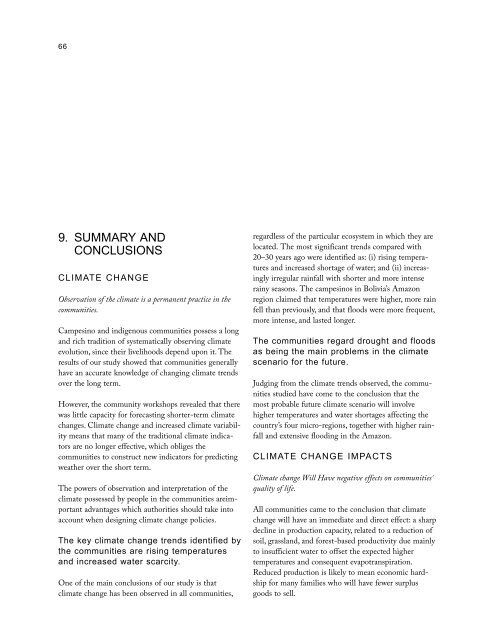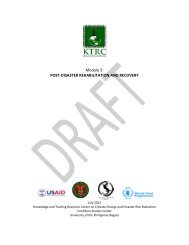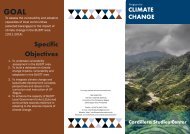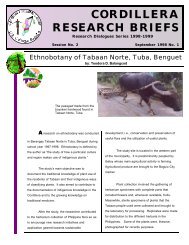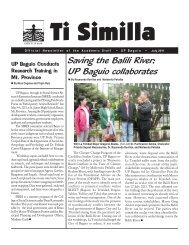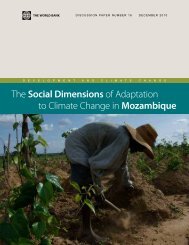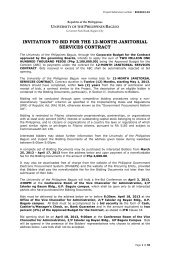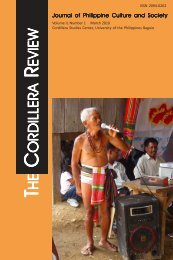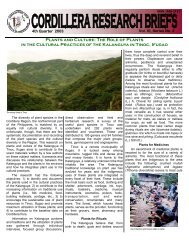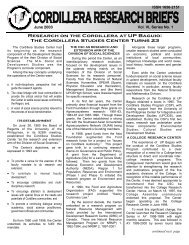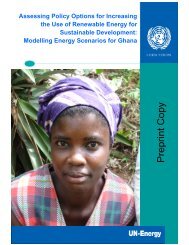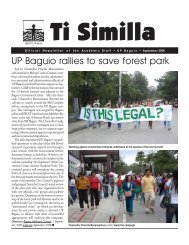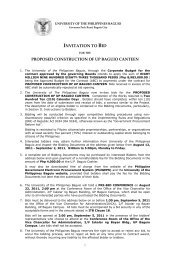EACC Bolivia
EACC Bolivia
EACC Bolivia
You also want an ePaper? Increase the reach of your titles
YUMPU automatically turns print PDFs into web optimized ePapers that Google loves.
66<br />
9. sUmmARy And<br />
conclUsions<br />
climAtE chAngE<br />
Observation of the climate is a permanent practice in the<br />
communities.<br />
Campesino and indigenous communities possess a long<br />
and rich tradition of systematically observing climate<br />
evolution, since their livelihoods depend upon it. The<br />
results of our study showed that communities generally<br />
have an accurate knowledge of changing climate trends<br />
over the long term.<br />
However, the community workshops revealed that there<br />
was little capacity for forecasting shorter-term climate<br />
changes. Climate change and increased climate variability<br />
means that many of the traditional climate indicators<br />
are no longer effective, which obliges the<br />
communities to construct new indicators for predicting<br />
weather over the short term.<br />
The powers of observation and interpretation of the<br />
climate possessed by people in the communities areimportant<br />
advantages which authorities should take into<br />
account when designing climate change policies.<br />
the key climate change trends identified by<br />
the communities are rising temperatures<br />
and increased water scarcity.<br />
One of the main conclusions of our study is that<br />
climate change has been observed in all communities,<br />
regardless of the particular ecosystem in which they are<br />
located. The most significant trends compared with<br />
20–30 years ago were identified as: (i) rising temperatures<br />
and increased shortage of water; and (ii) increasingly<br />
irregular rainfall with shorter and more intense<br />
rainy seasons. The campesinos in <strong>Bolivia</strong>’s Amazon<br />
region claimed that temperatures were higher, more rain<br />
fell than previously, and that floods were more frequent,<br />
more intense, and lasted longer.<br />
the communities regard drought and floods<br />
as being the main problems in the climate<br />
scenario for the future.<br />
Judging from the climate trends observed, the communities<br />
studied have come to the conclusion that the<br />
most probable future climate scenario will involve<br />
higher temperatures and water shortages affecting the<br />
country’s four micro-regions, together with higher rainfall<br />
and extensive flooding in the Amazon.<br />
climAtE chAngE impActs<br />
Climate change Will Have negative effects on communities´<br />
quality of life.<br />
All communities came to the conclusion that climate<br />
change will have an immediate and direct effect: a sharp<br />
decline in production capacity, related to a reduction of<br />
soil, grassland, and forest-based productivity due mainly<br />
to insufficient water to offset the expected higher<br />
temperatures and consequent evapotranspiration.<br />
Reduced production is likely to mean economic hardship<br />
for many families who will have fewer surplus<br />
goods to sell.


